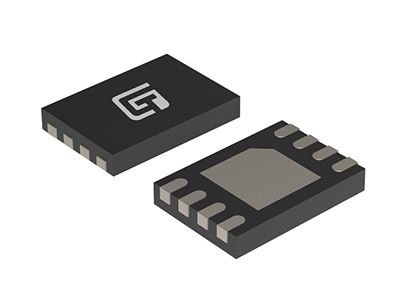Is eeprom volatile or nonvolatile
2023-06-29
In electronic equipment, EEPROM is a common type of memory used to store critical data and configuration information. However, there is some confusion as to whether EEPROM is volatile or non-volatile memory. This article will discuss the characteristics of EEPROM in detail and explore whether it is a volatile memory or a non-volatile memory.
 1. The basic concept of EEPROM
1. The basic concept of EEPROM
EEPROM is a programmable memory that can be programmed, read and erased in a power-on state. Unlike conventional ROM (Read Only Memory), EEPROM is somewhat programmable and erasable, making it useful in many applications.
2. Definition of non-volatile memory
Non-volatile memory is a type of memory that retains data even when power is removed or lost. This means that even if there is no power supply, the data in the memory remains intact. In this regard, EEPROM is considered a type of non-volatile memory due to its ability to retain data for long periods of time.
3. Definition of volatile memory
Volatile memory is a type of memory that loses stored data when power is lost or lost. When the power is interrupted, the data in the memory will be cleared. Common types of volatile memory include RAM (Random Access Memory). EEPROM is not a typical volatile memory because it maintains data integrity after power is removed or lost.
4. Special properties of EEPROM
Although EEPROM is classified as non-volatile memory, it has some special properties. The data of EEPROM can be programmed and erased many times, which makes it rewritable. This means that we can repeatedly modify and update the data in the EEPROM without replacing the entire memory chip. This programmability makes EEPROM a very flexible and reliable memory.
5. Select the appropriate memory type
When choosing a memory type, it needs to be determined according to the needs of specific applications. If you need to retain data for a long time, and have the characteristics of programmable and erasable, then EEPROM is an ideal choice. However, if data persistence is not a primary concern, or if data is read and written frequently, then volatile memory such as RAM may be more suitable.
In summary, EEPROM is a common memory type that is programmable and erasable, making it ideal for storing critical data and configuration information. Although EEPROM is classified as non-volatile memory, it has the characteristics of volatile memory to some extent, because it requires a power supply to maintain the stability of data. Selection of the appropriate memory type should be based on application requirements and importance of data retention.

EEPROM is a programmable memory that can be programmed, read and erased in a power-on state. Unlike conventional ROM (Read Only Memory), EEPROM is somewhat programmable and erasable, making it useful in many applications.
2. Definition of non-volatile memory
Non-volatile memory is a type of memory that retains data even when power is removed or lost. This means that even if there is no power supply, the data in the memory remains intact. In this regard, EEPROM is considered a type of non-volatile memory due to its ability to retain data for long periods of time.
3. Definition of volatile memory
Volatile memory is a type of memory that loses stored data when power is lost or lost. When the power is interrupted, the data in the memory will be cleared. Common types of volatile memory include RAM (Random Access Memory). EEPROM is not a typical volatile memory because it maintains data integrity after power is removed or lost.
4. Special properties of EEPROM
Although EEPROM is classified as non-volatile memory, it has some special properties. The data of EEPROM can be programmed and erased many times, which makes it rewritable. This means that we can repeatedly modify and update the data in the EEPROM without replacing the entire memory chip. This programmability makes EEPROM a very flexible and reliable memory.
5. Select the appropriate memory type
When choosing a memory type, it needs to be determined according to the needs of specific applications. If you need to retain data for a long time, and have the characteristics of programmable and erasable, then EEPROM is an ideal choice. However, if data persistence is not a primary concern, or if data is read and written frequently, then volatile memory such as RAM may be more suitable.
In summary, EEPROM is a common memory type that is programmable and erasable, making it ideal for storing critical data and configuration information. Although EEPROM is classified as non-volatile memory, it has the characteristics of volatile memory to some extent, because it requires a power supply to maintain the stability of data. Selection of the appropriate memory type should be based on application requirements and importance of data retention.
Recommended News
-
How to Auto Run Flash in Chrome: A Guide to Managing Flash Content
2024-12月-24
-
How to Turn Off Auto Flash
2024-12月-23
-
What is the Difference Between NOR Flash and NAND Flash?
2024-12月-16
























